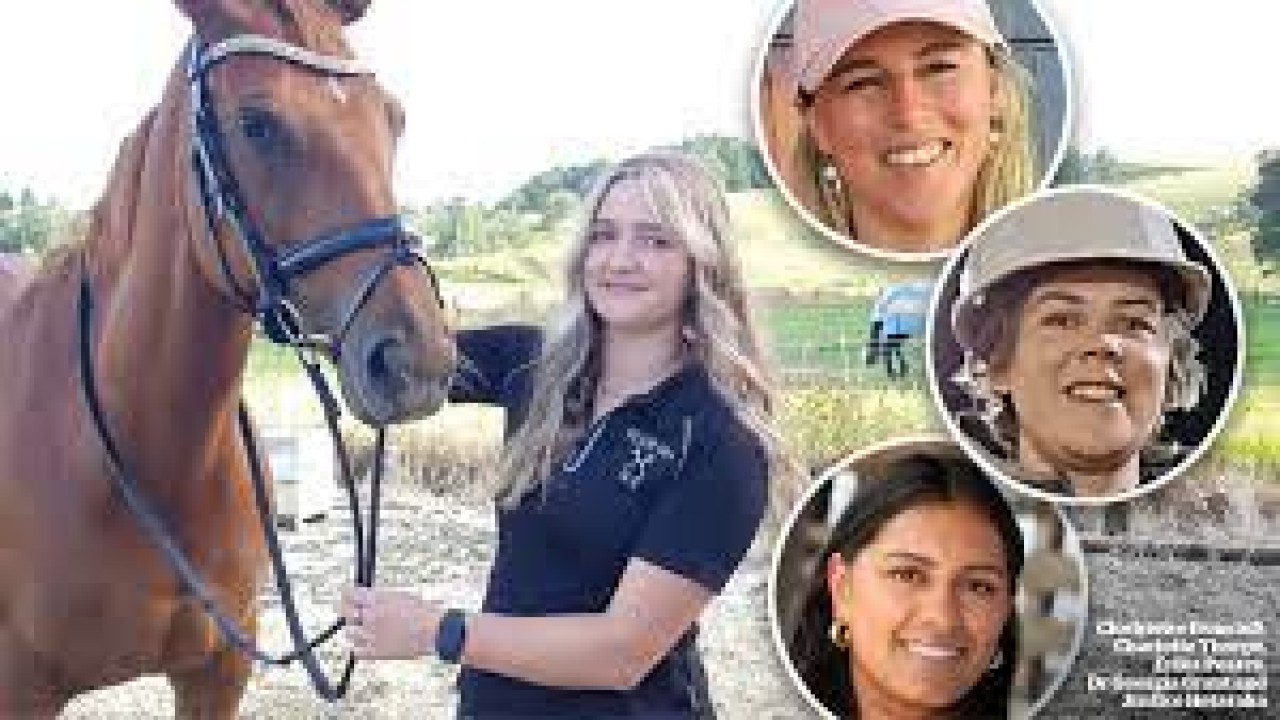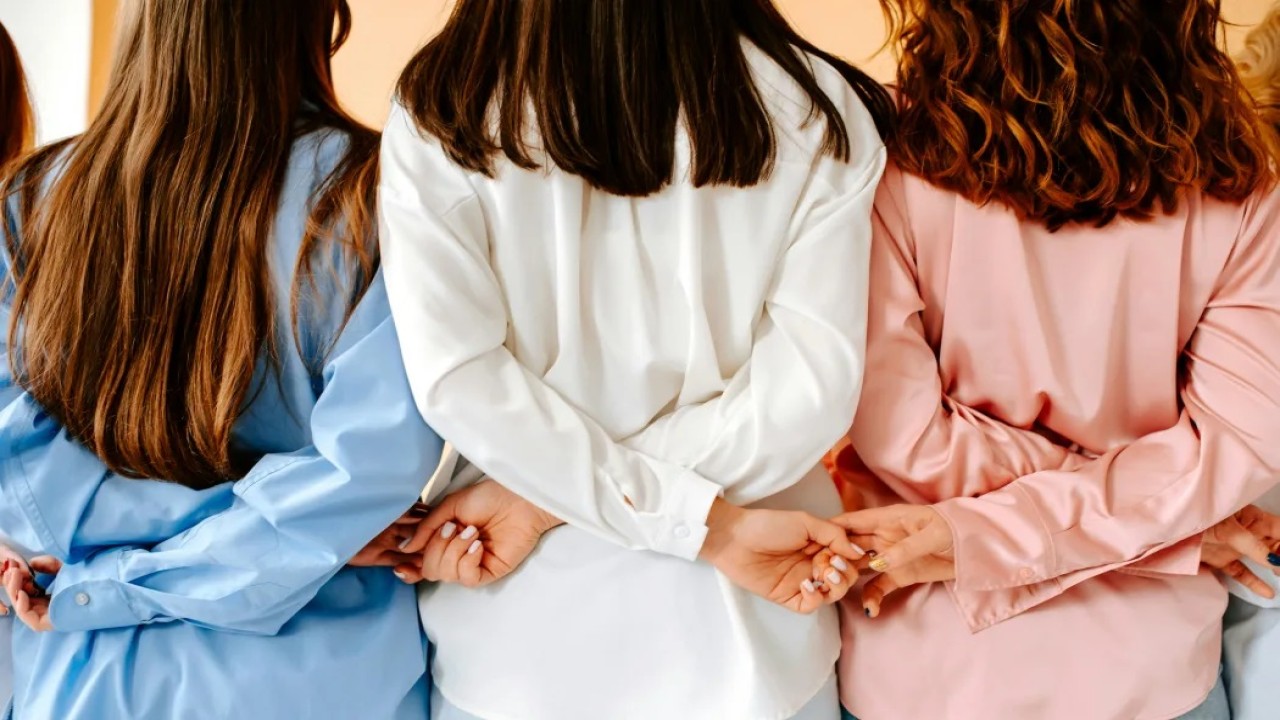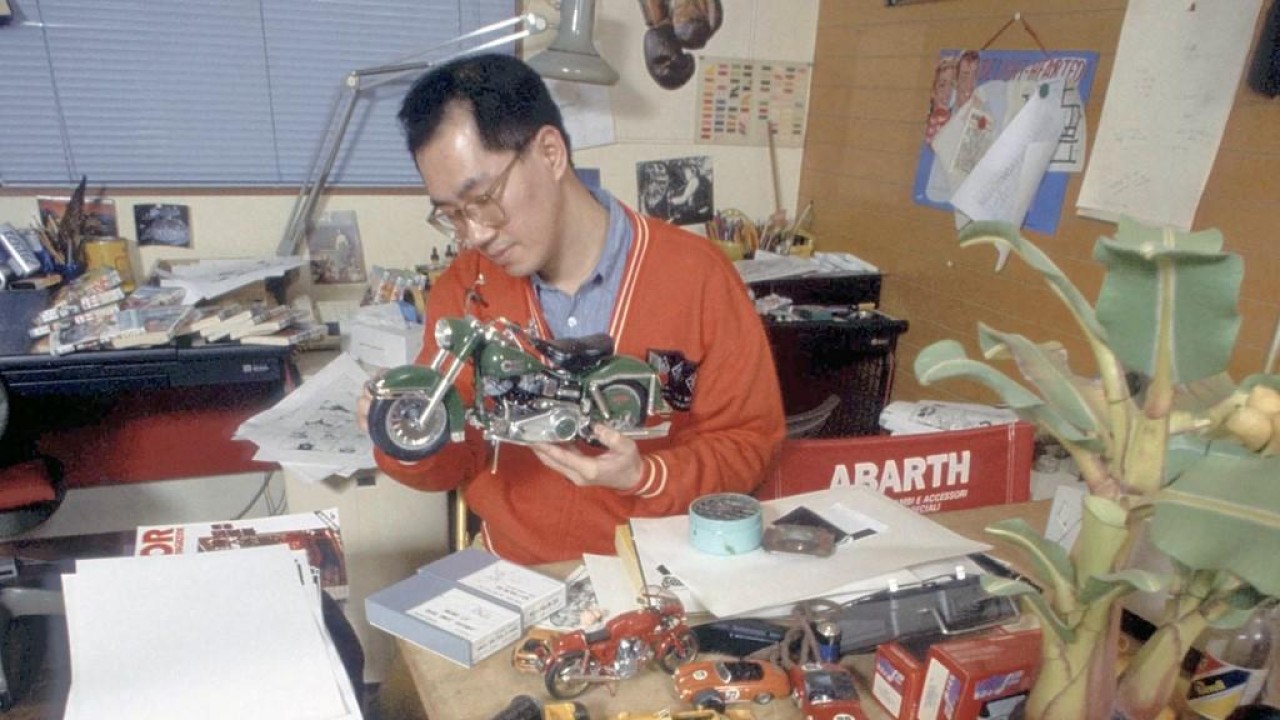International Women’s Day: Four Northland women reveal motivation behind their success
International Women’s Day is a global day celebrating the social, economic, cultural and political achievements of women. The theme for this year’s event on March 8 is “Inspire Inclusion” which aims to forge a more inclusive world for women, creating belonging, relevance and empowerment. Reporter Jenny Ling talks to four inspiring Northland women about their motivation to succeed in their chosen fields.
![Teenage equestrian Charlotte Thorpe [pictured on Wild Rose MH] has her sights set on Olympic stardom.](https://www.nzherald.co.nz/resizer/oW9w5p0cs4siwy5D8iXvPj8brgs=/1440x961/smart/filters:quality(70)/cloudfront-ap-southeast-2.images.arcpublishing.com/nzme/TINDIOWS6NBCZMAKS74E3FJ5O4.JPG)
Teenage equestrian Charlotte Thorpe [pictured on Wild Rose MH] has her sights set on Olympic stardom.
Sport: Charlotte Thorpe
Teenage equestrian Charlotte Thorpe has her sights firmly set on Olympic stardom and is already putting in the hard yards to get there.
The 16-year-old Kaitāia resident juggles schoolwork with training her two horses in the art of dressage, a series of complex movements that are completed in an arena, highlighting harmony between horse and rider.
Thorpe breaks in and trains her own horses, and competes alongside adults in the big league rather than on ponies, like most other riders do at her age.
She has clocked up an impressive number of wins during her riding career which has already spanned a decade.
Thorpe became interested in horse riding when her godmother gave her a pony for her sixth birthday.
“I started riding and competing and it went from there. I got into dressage and I really liked it.
“I like the way you try and improve each time; seeing the horse progress is the best part for me.”
Thorpe has had four ponies over the years, and has been competing on horses in adult classes since she was 14.
Her current two horses, Wild Rose MH, or Rosie for short, and Samba MH, are both Matthews Hanoverians who breed quality Hanoverian warmblood horses with top dressage bloodlines.
Thorpe said she likes the challenge of riding horses.
“It’s about the long game for us,” she said.
“It’s not so much about winning, it’s about trying to progress. Once you’re on a horse you’re with the adults.
“I could stay on ponies and keep winning but my big goal is to train bigger, better horses and have that experience.”
/cloudfront-ap-southeast-2.images.arcpublishing.com/nzme/MV3U4XYALZHDVLEWZXNLKQYOQA.JPG)
Charlotte Thorpe has clocked up an impressive number of wins during her dressage riding career which has already spanned a decade. Photo / Mike Dinsdale
Last year Thorpe won Dressage Northland Young Rider of the Year and Most Improved Combination for Northland.
She was the EquiMatch preliminary bronze reserve champion last year and in 2020 came a solid seventh in New Zealand’s premier equestrian Horse of the Year event for her category, level 1 dressage under 17.
This year has started well, with Thorpe and Rosie placing fifth in the level 4 dressage at the New Zealand Youth Dressage Festival in Taupo on January 26 and 27. The placing was just three per cent behind the leader.
She placed third overall in her level 4 dressage class at the Northland Champs at Barge Park in Whangārei in February.
There are also around 200 red, blue and yellow ribbons she’s collected over the years from various pony club ribbon days, A & P shows, and dressage tournaments.
Thorpe has lost count of the competitions she’s taken part in.
“I probably do about four big ones every season then little ones preparing beforehand, travelling around the North Island.”
Thorpe was among seven Far North athletes to receive Kauri Club scholarships through Sport Northland last November to help advance their sporting careers.
Thorpe said the $1000 scholarship was helping with mental resilience coaching before competitions.
Thorpe is being coached by her “idol”, Grand Prix dressage rider Vanessa Way.
She plans to give it one more year at Kaitāia College, then wants to work for Way at her Taranaki stables while applying to become a police officer.
As well as the time Thorpe spends training her horses every day, she also has to groom and feed them, muck out stables, and keep herself fit.
Thorpe’s ultimate goal is to be an Olympic dressage rider and take a horse from zero training to Grand Prix level before she’s 20.
Graded dressage tests are divided into nine levels which progressively get more difficult. Grand Prix equates to Olympic and world championship level.
Thorpe has so far trained Rosie to level 4.
“Taking Rosie through the levels and getting her to level 4, to see that progression is a big thing for me.
“I’m already this far – I feel like I can keep going.”
Thorpe said she is motivated to “try my best and be determined”.
“And having my family as support; they are always helping and supporting me at my shows. That drives me to do the best I can.”
/cloudfront-ap-southeast-2.images.arcpublishing.com/nzme/Y7AXK76NCNFAZHJW57SYQYODXI.JPG)
Justice Hetaraka credits her grandparents Janet and Te Warihi Hetaraka with her drive to challenge societal norms. Photo / Michael Cunningham
Education: Justice Hetaraka
Whangārei resident and educator Justice Hetaraka has practically moved mountains during her short but significant career.
But for the 24-year-old of Ngāti Wai and Kāi Tahu descent, helping others learn about Aotearoa’s sometimes confronting history, and her work with iwi to preserve the natural environment, is all about aroha.
Hetaraka was the head girl at her former school, Whangārei Girls’ High School, in 2016.
The following year her passion and commitment to Māori culture was recognised at the New Zealand Youth Awards in Wellington where she scooped the Change Maker Cultural Award.
The award was for creating a karakia - called Te Timatanga (The Beginning) - for her classmates and teachers to normalise Māori culture at the school.
In 2019 she co-founded History of Aotearoa [HĀ], a Tai Tokerau education programme that uses art and indigenous pedagogy to teach Aotearoa’s local history.
Hetaraka went on to complete her Law and Arts conjoint degrees at the University of Auckland in 2022, studying remotely from Whangārei to remain connected to her whānau.
“It’s been a crazy few years since high school,” she said.
“I’ve been lucky enough to be involved in and help support all these things to do with our re-indiginisation.
“As Māori and as a nation, helping and supporting our communities to understand different layers in our history.
“Whether in an environment space, or legal space, or education, they’re all connected.
“At the end of the day, the common thread is aroha, that’s at the centre of everything we do.”
/cloudfront-ap-southeast-2.images.arcpublishing.com/nzme/U7SWL5TZKJFT3E6BEPPRSOETT4.JPG)
Te Tai Tokerau educator Justice Hetaraka said she feels privileged in her work, where no two days are ever the same.
Raised in Whangārei, Hetaraka credits her grandparents, Janet and Te Warihi Hetaraka, and her wider whānau with her drive to challenge societal norms.
“I’m lucky to have been raised knowing there are other ways to do things.
“My whānau raised me to challenge the status quo.
“It’s not really about me, everything I do is in service of our people.
“Our community, our schools, our whānau have demanded this to happen.... they’re ready for it, they’re ready to cultivate their aroha in their communities.”
Hetaraka is currently a research officer at Te Ara Whanui research centre and is helping Wai 262 claimants involved in the long-running Waitangi Tribunal claim.
The kaupapa began when a group of Māori activists challenged the Crown about the policies and laws that were taking away Māori control over taonga.
Wai 262, known as the flora, fauna and intellectual property rights claim, involves six iwi, and Hetaraka’s work provides cultural education to support the realisation of the claim.
“It’s about exercising our own system of governance in relation to our environment,” Hetaraka said.
“And supporting papa [Hetaraka’s grandfather, an expert witness for the claim] in advancing that kaupapa.”
Hetaraka said she feels privileged in her work, where no two days are the same.
“I’m either out on the whenua (land) or in kura talking about whenua, or with whānau. There’s no standard day, there’s no 9am-5pm.
“It’s a privilege having people before us so I can have the flexibility to be creative.
Her advice to others seeking to follow their dreams is “to believe in yourself”.
“You have to have love for yourself, and you have to believe in yourself.
“It’s easy to get sucked into the social norms, but we need to be creative in our thinking about the future.
“And women are some of the most creative beings on the planet.”
/cloudfront-ap-southeast-2.images.arcpublishing.com/nzme/CLL7M4L3PRFTROGOGO2H5IHCTU.JPG)
Former Northlander and geologist Georgia Grant travels across the globe doing vital climate change research.
Science: Dr Georgia Grant
When former Northlander and geologist Dr Georgia Grant embarked on her career, she wanted to be an architect because of her love for old buildings.
Now the 35-year-old is a sedimentologist for GNS Science and travels to far-flung places across the globe doing vital climate change research that could change the world.
Last year she was awarded the prestigious L’Oreal-Unesco For Women in Science (FWIS) fellowship for her research into past periods of climate change and to aid her research which involves deep sea exploration.
GNS Science chief executive Chelydra Percy has previously said Grant was among a cohort of women in the science sector “helping to understand and problem solve some of the biggest challenges of our time”.
“There’s a certain element of stubbornness, to prove myself,” Grant said.
“I don’t think many of my teachers through the years thought that I would be a scientist, let alone successful, and there is nothing particularly special about my upbringing that would suggest this pathway.
“So it’s important to me to represent a different scientist for rangatahi and our youth.
“There’s also a lot of just seeing how far I can go, an innate drive and love of the work. It’s just exciting to think about what’s next.”
Grant was born in Kawakawa and moved to Mimiwhangata then Paihia with her parents as a child.
She was 17 when she relocated to Wellington to study, where she’s lived ever since.
Though she grew up with an appreciation of the environment, and her dad was a Department of Conservation ranger, she originally studied architecture at university.
“But I realised that I wasn’t very good at architecture, and I was missing science and wanted to find what I could passionately contribute to society with.
“I kind of stumbled across geology, it wasn’t an area of study or a career that I knew much of, apart from mining.
“When I read the class descriptions for the geology science degree, I was amazed that I would know about Earth’s history, the climate system, how our landscape formed and earth hazards like earthquakes, volcanoes and tsunami.”
Grant now works for GNS Science’s Surface Geoscience Department.
Apart from visiting Australia, Italy, America, and the UK for conferences and meetings, the highlight of her career has been visiting Antarctica and the Arctic for fieldwork.
/cloudfront-ap-southeast-2.images.arcpublishing.com/nzme/ANCXV7SPRBB5LBU2756LU2GXYE.JPG)
GNS Science sedimentologist Georgia Grant said the highlight of her career has been visiting Antarctica and the Arctic for field work.
“I went to Antarctica in 2017 as a PhD student to help drill through the Ross Ice Shelf, as part of exploration for the current Sensitivity of the West Antarctic Ice Sheet to 2 degrees Celsius (SWAIS2C) (project) of warming.
“And last year with my expedition onboard the RV Joides Resolution offshore Greenland.”
The Greenland trip involved departing from Reykjavik, Iceland abroad the International Ocean Discovery Programme research vessel for the eight-week expedition from August to October.
There, Grant saw first-hand coastal erosion and glacial retreat while working 12-hour shifts often through the night.
“It was an incredible time for a bunch of reasons.
“The science aims for the expedition - to uncover how old the Greenland Ice Sheet is and how it has changed since its inception - is really exciting science to be a part of and contribute to.
“It was a huge team effort requiring all 117 members on board to pull it off.”
Grant recently returned from Texas in the United States, where she spent two weeks scanning the cores [rock from the earth] collected in Greenland.
She is heading to Germany this month to sample the cores, and will present her results at the American Geophysical Union conference in Washington DC later this year.
Grant’s advice for young women pursuing their careers is to “find what you love and you’ll never have to work a day”.
“We spend too many hours at work to not be doing something we enjoy.
“Most important is to persevere and be persistent.
“Don’t be afraid of failure, failing teaches you more than success does. It lets you know whether you really care about being there.”
/cloudfront-ap-southeast-2.images.arcpublishing.com/nzme/TCSR2JNFLNHM5OHVS3UFK2DCDI.JPG)
Multi-disciplined artist and designer Erika Pearce has made her mark on various walls in the Far North. Photo / Jenny Ling
Art: Erika Pearce
Artist Erika Pearce would paint every wall in every Northland town with her bold, colourful murals if she was allowed to.
The 36-year-old multi-disciplined artist and designer has already made her mark on various places in the Far North.
There’s the Paihia sea wall, inspired by the Bay of Island’s sea life, two laneways painted with flying fish and native birds, and the stairway by new restaurant, the Crafty Local.
In Kerikeri, she’s painted murals in Kerikeri Primary School, the Mitre 10 Waipapa playground, Plant Zone Direct, and even a kingfisher on a power box along Inlet Rd.
She is currently working on a mural on Masonic Lane in Kerikeri commissioned by Our Kerikeri Trust.
The piece - of a woman surrounded by flowers and fish – represents Papatūānuku, a mother earth figure, along with the diverse cultures of Te Tai Tokerau.
“I like my work to be beautiful on the surface, but they have a lot of depth when you unravel them,” Pearce said.
“When people know the story and meaning behind them, they’re quite excited to share that.”
Born and raised in Auckland and with family in the Far North, Pearce spent a lot of time in the Hokianga and the Bay of Islands as a youngster.
After completing a Bachelor of Design and Illustration at Auckland University of Technology, she worked as a graphic designer for a signage company.
In 2012 she left to start her own freelance business and has gone on to complete over 100 large murals and street art pieces, along with commissioned paintings, graphic designs, illustrations, and commercial branding.
She has worked with councils, schools, businesses, and homeowners across New Zealand, and in Australia, Fiji, Thailand, Japan, Indonesia, the UK, and the USA.
“I’ve always been arty ever since kindy,” she said.
“I’ve always been dyslexic and had learning difficulties as a kid.
“Art was the only thing I didn’t struggle with.”
Highlights of Pearce’s career include painting a Kiwiana mural in Japan for the Olympics, and a mural in Melbourne’s famous Hosier Lane.
/cloudfront-ap-southeast-2.images.arcpublishing.com/nzme/I4GXT4SBHZCGBMO4VGFIZ3RF5Q.JPG)
Erika Pearce’s work embraces the themes of women, culture, and the environment.
Her work has evolved to embrace the themes of women, culture, and the environment.
“I like painting the strength and beauty of women, it’s a lot to do with coming into my own as a woman.
“I was a real tomboy as a kid.
Pearce moved to Kerikeri in 2020, and has continued her themes, drawing inspiration from nature and people.
“It’s something that I’m drawn to ... the portraits I paint are not necessarily who it is, it’s the emotion that’s being captured.
“I keep coming back to the ocean and feminine energy... I like it [art] to be pretty, but I like it to have depth.”
Pearce also wants to inspire communities to protect their coastlines and ocean environment with her large-scale ocean murals.
Above all, she loves to paint colourful murals which reflect where she’s at in her life.
“At the moment I’m in such a happy beautiful place in my life and I feel that’s coming through in my art.
“There’s a lot of colour, and pink and warmth that’s coming through.
“I was in a blue era a few years ago, much like Picasso, and I’m in my pink and colourful era right now.”
Pearce’s message for budding artists is to: “Find your passion, that one thing that makes your heart sing.... and chip away at that”.
Jenny Ling is a news reporter and features writer for the Northern Advocate. She has a special interest in covering health, roading, lifestyle, business, and animal welfare issues.









Comments (0)
No comments found